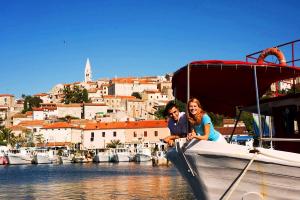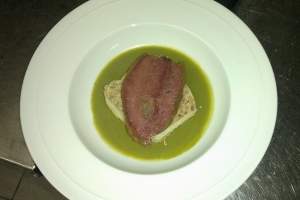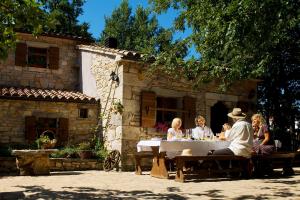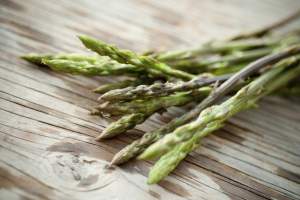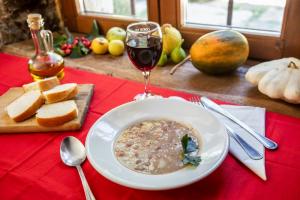Seafood specialties
Seafood soup or risotto, brodetto - Istrian-style fish stew, grilled scampi, octopus or spider crab salad are only some of the characteristic Istrian seafood specialties...
The Spider crab
(Maja squinado)
The spider crab (Maja squinado) is a member of the crustacean family (Majiidae). Its shell is brown-red with red spots along its long legs. 25cm in length, the spider crab weighs in at 1,5 kg. At home on many sea floor environs, they commonly dwell at depths of 30-50 meters but have been found as deep as 150 meters. They are found throughout the Adriatic Sea, including Istria’s Premuda, Lošinj, Cres, Unije and Susak islands, with an abundance in the Pula basin near Medulin, Premantura and Banjole.
Considered a delicacy, each crab yields a limited amount of meat but the delicious taste is very similar to lobster. Istrian fishermen often prepare the crabs by roasting them in fires made from grapevines. When the shells begin to separate from the meat, the sumptuous meal is ready.
Scampi
(Nephrops norvegicus)
Scampi (Nephrops norvegicus) is a member of the lobster family (Homaridae), and is widely considered the tastiest of all. Available throughout the year, it is best in May, June and July. The most successful hauls are often at nights when the moon is full as this is when the lobster abandons its shelter in the silt to search for food. Its habitat is in the channels of the northern Adriatic, particularly in Istria’s Kvarner Bay from Zadar to Novigrad, Rijeka and Cape Kamenjak. For this reason, it is often called the Kvarner crab.
Scampi Kvarner Bay is a true luxury, but readily available at fine Istrian restaurants. Try it boiled, grilled, prepared in sauce, wrapped with Istrian ham, roasted on a spit, breaded, marinated, and – in the latest fashion – raw with a few drops of excellent Istrian olive oil.
The Scallop
(Pecten Jacobaeus)
Scallops (Pecten Jacobaeus) live in sandy environs between 5 and 30 meters deep, often in the vicinity of sweet or fresh water. The western Istrian coast, especially near the mouth of the Mirna River, is well-known for top quality scallops.
At their best in winter, scallops can be found in Istria year-round. Typical preparations include boiling, grilling and broiling, as well as raw. No matter how they are prepared, Istrian scallops are recognized for their wonderful flavor and texture.
The Oyster
(Ostrea edulis)
The oyster belongs to the Ostreidae family. It has an oval, non-symmetrical shell with irregular edges. The walls of the shell are thick and the surface is traversed by concentric ridges. It is a grey stone color with violet areas, and mother-of-pearl on the inside. There is no frontal closing muscle.
The oyster typically dwells in low coastal waters to a depth of ten meters and is farmed as well. One of the best known areas for oyster farming is Lim Bay on Istria’s west coast, characterized by its excellent conditions for farming and producing oysters. Oysters from Lim Bay are delicious and nutritious, rich in proteins, carbohydrates and vitamins (A, B, B2, C, D), and with abundant meat. They have been appreciated as a delicacy by everyone since the ancient Romans themselves.
While oysters can be prepared in a variety of ways, raw is most delicious. It simply has to be opened with special knife and perhaps dressed with a few drops of lemon juice. Fresh cold oysters are a perfect match for champagne and sparkling wines. In winter, oysters are their most delicious and many say sexual performance is enhanced by oysters.
The Pilchard
(Sardina pilchardus)
Summer evokes the sea like no other season, and Istria’s pristine Adriatic coastline offers a bounty of delicacies. Along with the renowned red fish, giltheads, sea bass and St. Peter's fish, our waters provide an abundance of lobster, scampi, crab, scallops, oysters, clams and mussels. But it is the pilchard that is the most authentic staple of the Mediterranean seafood diet. This exceptionally tasty and nourishing fish is very delicate, and offered exclusively when it is fresh. Typically grilled or sautéed, it can also be salted, marinated, conserved in oil or prepared in many other creative ways. Because of its high quotient of healthful omega-3 fatty acids, physicians recommend the consumption of pilchard at least twice a week.
In Fažana, where their most ancient feast is a celebration of the pilchard, this versatile fish is experiencing a renaissance. The community has established the ‘little fishermen academy’ or ‘Sardela’ where students can learn the proper techniques for salting pilchard. There is also a coastal promenade with pilchard-themed sculptures crafted by four local artists, and coming soon - Pilchard Park.












